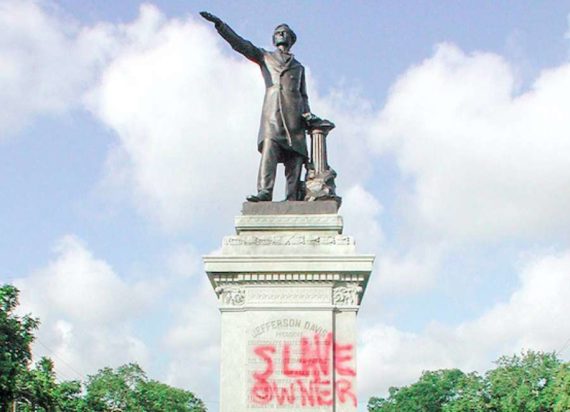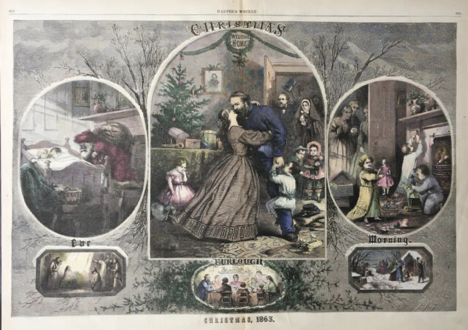This essay was originally printed in the comments section of the Apollo Magazine article “Dismantling America’s Monuments to White Supremacy” by Kristen Teen.
The removal and desecration of images of enemies of the state was an accepted part of Roman political life, a formal public dishonour named as damnatio memoriae, and the destruction of built and material culture of a defeated foe was, like rape of enemy women, de facto psychological warfare millennia before such a concept was formalised. In recent years the relocation of the Bronze Soldier of Talinn, and associated Russian war graves in 2009, put contested memorialisation firmly on the agenda at both art and architecture/design conferences. The Bronze Soldier controversy arose long before Dylann Roof or the Black Lives Matter movement stirred modern consciences, given public arguments over statues are now strongly associated with race and post colonialism. This linkage was affirmed newly and spectacularly by Mitch Landrieu’s removal of four Confederate memorials in New Orleans. Landrieu’s post-removal speech, transparently praising his own actions, whilst widely applauded as a new benchmark in racial equality, simultaneously reveals less admirable content, a favouring of extreme theatrical sentiment over rational discussion in public life, especially around identity, a supreme self confidence via specifically North American narratives and celebrity name dropping as corroborating authenticity. The performativity and dramatic self-projection within the agora shown by Landrieu and other advocates for removing controversial monuments in the United States, cuts across the frequent claims that removal represents an inevitable expression of natural justice and a limpid process of delivering a rightful morality to public space and the designed landscape.
Two of the monuments, those to Generals Beauregard and Lee, set into impressive formalised beaux arts civic spatial installations, now despoiled by civic decree, were of undoubted world significance. Under other circumstances, these monuments should have found advocates amongst Victorianists and curators. Yet given that racism and politics are currently prioritised over art history and connoisseurship, introducing a counter narrative, in light of the positivist consensus is difficult. Art professionals enter an unheimlich ambiguous space when they almost gleefully advocate the destruction of nineteenth century material culture and define such destruction as socially and morally desirable, without consideration of the de facto foreclosing of debate. Once an monument is deemed offensive, it is usually a matter of when, not if, it will be removed and possibly relocated, be it on civic, university or ecclesiastical property. Nineteenth-century figurative sculpture (also paintings, stained glass and urban design) is collateral damage in tectonic plate-shifts around politics, culture and race. Attitudes to Confederate Monuments also document a generational divide, when younger white North Americans publicly wear and accept the burden of centuries of complex racial inequalities with more expiational self-consciousness than older. Younger Americans equally regard protecting the rights of a range of minorities in public life as more important than unfettered freedom of speech.
Conversely British academics, including Cheryl Hudson, Frank Furedi, Joanna Williams and Chris Patten opened a space around the decision to keep the Rhodes statue at Oriel where robust debate about the coexistence of differing ideas and plural meanings embodied by historical material culture, is possible without endorsing racism or censorship. British practice highlights potential lacunae in North American debates and an associated reluctance to pull apart current intellectual paradigms or confront difficult taboos. In an era which recognises the prevalence of wicked problems that resist simple answers, and equally multiple narratives and audiences, exploring solutions that suit a range of affected parties should be plausible.
Besides Confederate Monuments, no other artworks pay so spectacularly for the sins of their originating culture. Elastic tolerance is directed towards artworks from other societies whose values differ substantially from present day norms. Much admired historic art including Greek, Roman, Egyptian, Pre-Columbian was produced in societies where slavery and impressed labour flourished, as too some African, Asian, Oceanic and Middle Eastern artefacts. Some Third Reich artworks are granted art historical traction and Maoist and Stalinist imagery is warmly regarded as popular kitsch, in both instances sidelining the state-endorsed crimes behind the artworks’ political context. The revelations of systematic abuse of children and first nation peoples by various churches currently makes no real impact upon the display of historical Christian art. Islamic art and architecture is separated from the popular tabloid stereotyping of Moslems as terrorists.
Removing Confederate monuments does not erase the academically discounted ‘Lost Cause’ from public life: it accords it an unheimlich authority. Confederate public memorialisation was ardent and intense, because it was a collective shared construct, a hyper-elaborate fantasy that ambitiously reconfigured urban space and made myth reality. Protesting the egregious offence and analogue tangible pain triggered by Confederate public art grants it a liveness and agency, rendering its fabricated back story of malleable histories real and authentic. Furthermore erasing the Confederacy normalises public life by removing a proto post modernist emphasis on the power of narrative above enlightenment notions of fixed truth. Thus Landieu’s gestural fiat and the lobby group Take-Em-Down Nola enact conservative as well as radical powers, whilst deploying the same spectacular dramatics that served the Confederacy for a century or more.







